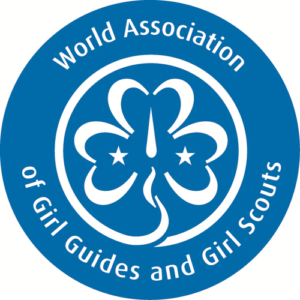 The 22nd February 2017 saw girls of all ages celebrate World Thinking Day as part of the World Association of Girl Guides and Girl Scouts (WAGGGS). It is the one day of the year where Girl Guides and Girl Scouts all over the world think of others. We hold dear our international friendships and speak out on the different issues that affect girls and young women across the globe. There is usually a meeting dedicated to celebrating World Thinking Day in every pack or troop, and this got me thinking about how much I really knew about the organisation I have been part of since I was ten years old.
The 22nd February 2017 saw girls of all ages celebrate World Thinking Day as part of the World Association of Girl Guides and Girl Scouts (WAGGGS). It is the one day of the year where Girl Guides and Girl Scouts all over the world think of others. We hold dear our international friendships and speak out on the different issues that affect girls and young women across the globe. There is usually a meeting dedicated to celebrating World Thinking Day in every pack or troop, and this got me thinking about how much I really knew about the organisation I have been part of since I was ten years old.
Girl Guides evolved after the appearance of Scouting for Boys written by Robert Baden-Powell in 1908. It was a book filled to the brim with ideas for boys’ club leaders to include outdoor adventure activities into their programmes. It was originally published every fortnight. Small gangs of boys would then club together to buy the issues. These boys soon formed into Scout Patrols to try out the different adventurous activities and exciting games suggested by the war hero. Girls, too, soon formed patrols to do the same thing. Some believe that Robert Baden-Powell disapproved of this idea. The very idea of Girl Scouts went against the traditional values of society and what was expected of women at the time. There is one vital piece of evidence, however, that provides an alternative view. When reading Scouting for Boys, we find the author telling us that “[s]couting is equally suited to boys and girls”.
Yet, the social ideals of the Edwardian era meant that many disapproved of Girl Scouts. Girls staged demonstrations for society to do more for girls. This led Robert Baden-Powell to turn to his sister, Agnes, for support in creating a new organisation especially for girls. It was an enlightened choice. Agnes was a skilled housekeeper and had some unusual interests that included needlework, an interest in aviation, astronomy and camping. The strange combination helped her to develop a programme of activities for Girl Guides that would please everyone. The programme included a varied range of outdoor adventure with the more traditional activities that Edwardian parents felt their daughters should be doing. The scheme was an all-round success and the Girl Guides Association was formally founded in 1910. Word soon spread of this new movement. Juliette Gordon Low started her own Girl Scout troop in Georgia (USA) and founded the Girl Scouts movement in 1912. More countries followed suit with Australia, Canada, Denmark, Finland, New Zealand and South Africa starting their own groups of Girl Guides. They soon created Girl Guide Associations of their own as the movement grew within each country and spread all over the world.
There is more information on the Girlguiding Worldwide website, and to learn more about what makes Guiding special visit the Girl Guiding site.
-Claire Amundson
Junior Girl
Girl Museum Inc.
